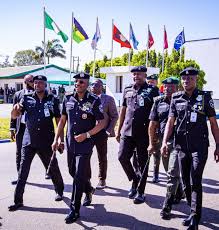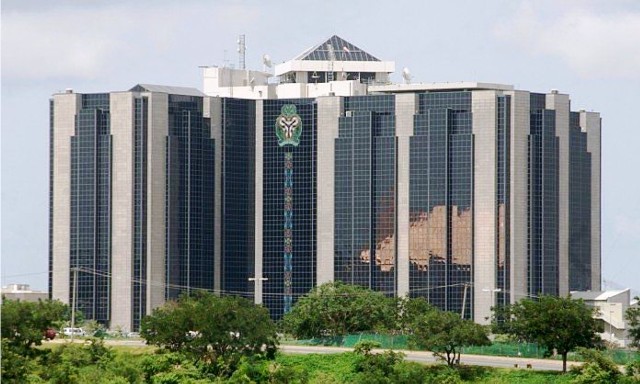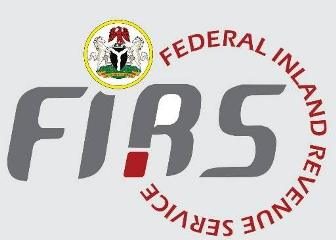Opinion
Nigeria Police And The “Miscreants” Theory

The “withdrawn” reaction of the Rivers State Police Command to public condemnation of the police antagonism to a recent peaceful protest in Port Harcourt, tagged #Take-IT-Back Movement organised by Civil Society Organisations, the Niger Delta Congress and other concerned groups, leave much to be desired. The Police Public Relations Officer of the Rivers State Command, Grace Iringe-Koko in what seems a brilliant defence to the action of the unprofessional and inordinately ambitious conduct of the policemen had described those whom the police threw cannisters of teargas at, as, “miscreants and thieves”. To say the least, the Channel Television Reporter, Charles Opurum, Allwell Ene of Naija FM, Soibelelemari Oruwari of Nigeria Info, Ikezam Godswill of AIT and Femi Ogunkhilede of Super FM who were among those tear-gassed while discharging their legitimate duties of covering the peaceful protest, could not have been “miscreants” and “thieves”. Such practice of giving people a bad name to whip up public sentiment and hate and give a cosmetic treatment to an exceedingly ugly incident, seems the antics of some men of the Nigeria Police.
Some years ago I remember a trigger- happy police officer had rhetorically asked me, “Do you know I can shoot you here and brand you a criminal”? The question that readily came to my mind was, if a public officer and a professional journalist of several years of practice could be so threatened and branded a criminal, what is the fate of common citizens in society. That lends credibility to the fact that some victims of police brutality and extra-judicial killings are innocent. They are mere victims of circumstances. It is also common experience that men of the Nigeria Police swoop on scenes of crime, arrest some innocent residents of the area, brand them suspects and hurl them in detention for more than 48 hours. Nigeria Police should be more professional enough in their operations, so that innocent people will not suffer humiliation, incarceration and financial losses for bail. Agreed that it is within the statutory obligation of the Public Relations unit to launder the image of its organisation, but it should be done with discretion, and not with utter disregard and disrespect to the sanctity of human lives. Refutal must be factual and truth based.
The public relations or image making service if not done conscientiously can dent the credibility and integrity of a practitioner. No doubt the viral video clips on the police hurling teargas cannisters on peaceful protesters cannot be described as a figment of imagination or an attempt to “incite public anxiety and create unnecessary tension within the State” as stated by the Police Public Relations Officer in her reaction to public condemnation of the action of her colleagues. Though the able and Media-friendly Rivers State Commissioner of Police has apologised to the Nigeria Union of Journalists, Rivers State Council and the assaulted Journalists, for the unprofessional conduct of the policemen who were involved in the Journalists’ brutality, the conduct was, according to the leadership of Rivers State Council of Nigeria Union of Journalists, “barbaric, inhuman and a flagrant disrespect to the rights of the assaulted journalists. Recall that the Rivers State Police Command had described as false, unfounded and baseless, reports that police officers fired teargas on unarmed protesters in an attempt to disperse them.
In the words of the Police Public Relations officer, “Upon receiving intelligence regarding the protest, our officers were promptly deployed to the specified locations. “On arrival, a group of miscreants was observed engaging in criminal acts, including the theft of mobile phones and other valuables from unsuspecting members of the public. “Our operatives responded swiftly, dispersing the individuals. This baseless story appears to be a deliberate fabrication by mischief makers seeking to incite public anxiety and create unnecessary tension within the state.” However, it is time Nigeria Police realised that the right to peaceful protest is legitimate and fundamental. It is enshrined in International rights instruments, including the Universal Declaration of Human Rights (UDHR), the International Covenant on Civil and Political Rights, the African Charter on Human and Peoples’ Rights and domesticated by Nigeria. Section 40 of Nigeria’s Constitution guarantees every citizen the right to assemble freely. The right to peaceful protest is the beauty and a function of democratic governance. It offers the masses the opportunity for self expression and calling erring or a failed government or leadership back to its statutory obligation.
It allows people to publicly voice their concerns, challenge injustices, and participate actively in the democratic process. Protests serve as a vital mechanism for holding leaders accountable and ensuring that government actions reflect the will and needs of the people. The recognition and approval of the right to protest is one action that makes a great difference between a truly democratic government from a repressive, dictatorial and despotic administration. Protest is evident and inevitable in every human institution or organisation from family to school, work places etc, if the heads or the administrators abuse their position and treat with contempt the people on whose prerogative they (leaders) were elected. Some children have also protested against their parents, students protest against wrong administration etc. Protest is therefore, a corrective mechanism, it is expression of a dissenting position against anti-people policies and programmes. The distinctiveness of the Democratic governance over the Military is unreserved and unalloyed respect and regard for the Rule of Law. If the Rule of Law and its implications are undermined, then there is inevitable transition to dictatorship, a military regime in the garb of a civilian administration.
However, the calamitous consequences during the #EndSARS protest and #EndBadGovernance protest show that the respect for the rule of law and its implications remain a far-cry to constitutional requirement. The losses incurred during such protests cannot be consigned to the dusbin of history in a hurry. What is the outcome of the #EndSARS protests and brutality? Nigeria Police and other security agencies should tread with caution on the issue of peaceful protests and treating journalists and innocent members of the public as “miscreants”, and “thieves”.
By: Igbiki Benibo
Opinion
Wike VS Soldier’s Altercation: Matters Arising

The events that unfolded in Abuja on Tuesday November 11, 2025 between the Minister of the Federal Capital Territory, Chief Nyesom Wike and a detachment of soldiers guarding a disputed property, led by Adams Yerima, a commissioned Naval Officer, may go down as one of the defining images of Nigeria’s democratic contradictions. It was not merely a quarrel over land. It was a confrontation between civil authority and the military legacy that still hovers over our national life.
Nyesom Wike, fiery and fearless as always, was seen on video exchanging words with a uniformed officer who refused to grant him passage to inspect a parcel of land alleged to have been illegally acquired. The minister’s voice rose, his temper flared, and the soldier, too, stood his ground, insisting on his own authority. Around them, aides, security men, and bystanders watched, stunned, as two embodiments of the Nigerian state clashed in the open.
The images spread fast, igniting debates across drawing rooms, beer parlours, and social media platforms. Some hailed Wike for standing up to military arrogance; others scolded him for perceived disrespect to the armed forces. Yet beneath the noise lies a deeper question about what sort of society we are building and whether power in Nigeria truly understands the limits of its own reach.
It is tragic that, more than two decades into civil rule, the relationship between the civilian arm of government and the military remains fragile and poorly understood. The presence of soldiers in a land dispute between private individuals and the city administration is, by all civic standards, an aberration. It recalls a dark era when might was right, and uniforms conferred immunity against accountability.
Wike’s anger, even if fiery, was rooted in a legitimate concern: that no individual, however connected or retired, should deploy the military to protect personal interests. That sentiment echoes the fundamental democratic creed that the law is supreme, not personalities. If his passion overshot decorum, it was perhaps a reflection of a nation weary of impunity.
On the other hand, the soldier in question is a symbol of another truth: that discipline, respect for order, and duty to hierarchy are ingrained in our armed forces. He may have been caught between conflicting instructions one from his superiors, another from a civilian minister exercising his lawful authority. The confusion points not to personal failure but to institutional dysfunction.
It is, therefore, simplistic to turn the incident into a morality play of good versus evil.
*********”**** What happened was an institutional embarrassment. Both men represented facets of the same failing system a polity still learning how to reconcile authority with civility, law with loyalty, and service with restraint.
In fairness, Wike has shown himself as a man of uncommon courage. Whether in Rivers State or at the FCTA, he does not shy away from confrontation. Yet courage without composure often feeds misunderstanding. A public officer must always be the cooler head, even when provoked, because the power of example outweighs the satisfaction of winning an argument.
Conversely, soldiers, too, must be reminded that their uniforms do not place them above civilian oversight. The military exists to defend the nation, not to enforce property claims or intimidate lawful authorities. Their participation in purely civil matters corrodes the image of the institution and erodes public trust.
One cannot overlook the irony: in a country where kidnappers roam highways and bandits sack villages, armed men are posted to guard contested land in the capital. It reflects misplaced priorities and distorted values. The Nigerian soldier, trained to defend sovereignty, should not be drawn into private or bureaucratic tussles.
Sycophancy remains the greatest ailment of our political culture. Many of those who now cheer one side or the other do so not out of conviction but out of convenience. Tomorrow they will switch allegiance. True patriotism lies not in defending personalities but in defending principles. A people enslaved by flattery cannot nurture a culture of justice.
The Nigerian elite must learn to submit to the same laws that govern the poor. When big men fence off public land and use connections to shield their interests, they mock the very constitution they swore to uphold. The FCT, as the mirror of national order, must not become a jungle where only the powerful can build.
The lesson for Wike himself is also clear: power is best exercised with calmness. The weight of his office demands more than bravery; it demands statesmanship. To lead is not merely to command, but to persuade — even those who resist your authority.
Equally, the lesson for the armed forces is that professionalism shines brightest in restraint. Obedience to illegal orders is not loyalty; it is complicity. The soldier who stands on the side of justice protects both his honour and the dignity of his uniform.
The Presidency, too, must see this episode as a wake-up call to clarify institutional boundaries. If soldiers can be drawn into civil enforcement without authorization, then our democracy remains at risk of subtle militarization. The constitution must speak louder than confusion.
The Nigerian public deserves better than spectacles of ego. We crave leaders who rise above emotion and officers who respect civilian supremacy. Our children must not inherit a nation where authority means shouting matches and intimidation in public glare.
Every democracy matures through such tests. What matters is whether we learn the right lessons. The British once had generals who defied parliament; the Americans once fought over states’ rights; Nigeria, too, must pass through her own growing pains but with humility, not hubris.
If the confrontation has stirred discomfort, then perhaps it has done the nation some good. It forces a conversation long overdue: Who truly owns the state — the citizen or the powerful? Can we build a Nigeria where institutions, not individuals, define our destiny?
As the dust settles, both the FCTA and the military hierarchy must conduct impartial investigations. The truth must be established — not to shame anyone, but to restore order. Where laws were broken, consequences must follow. Where misunderstandings occurred, apologies must be offered.
Let the rule of law triumph over the rule of impulse. Let civility triumph over confrontation. Let governance return to the path of dialogue and procedure.
Nigeria cannot continue to oscillate between civilian bravado and military arrogance. Both impulses spring from the same insecurity — the fear of losing control. True leadership lies in the ability to trust institutions to do their work without coercion.
Those who witnessed the clash saw a drama of two gladiators. One in starched khaki, one in well-cut suit. Both proud, both unyielding. But a nation cannot be built on stubbornness; it must be built on understanding. Power, when it meets power, should produce order, not chaos.
We must resist the temptation to glorify temper. Governance is not warfare; it is stewardship. The citizen watches, the world observes, and history records. How we handle moments like this will define our collective maturity.
The confrontation may have ended without violence, but it left deep questions in the national conscience. When men of authority quarrel in the open, institutions tremble. The people, once again, become spectators in a theatre of misplaced pride.
It is time for all who hold office — civilian or military — to remember that they serve under the same flag. That flag is neither khaki nor political colour; it is green-white-green, and it demands humility.
No victor, no vanquish only a lesson for a nation still learning to govern itself with dignity.
By; King Onunwor
Opinion
Ndifon’s Verdict and University Power Reform

Opinion
As Nigeria’s Insecurity Rings Alarm

-

 Business4 days ago
Business4 days agoCBN Revises Cash Withdrawal Rules January 2026, Ends Special Authorisation
-
Business4 days ago
Shippers Council Vows Commitment To Security At Nigerian Ports
-

 Business4 days ago
Business4 days agoFIRS Clarifies New Tax Laws, Debunks Levy Misconceptions
-

 Business4 days ago
Business4 days agoNigeria Risks Talents Exodus In Oil And Gas Sector – PENGASSAN
-

 Politics4 days ago
Politics4 days agoTinubu Increases Ambassador-nominees to 65, Seeks Senate’s Confirmation
-
Sports4 days ago
Obagi Emerges OML 58 Football Cup Champions
-
Business4 days ago
NCDMB, Others Task Youths On Skills Acquisition, Peace
-

 Sports4 days ago
Sports4 days agoFOOTBALL FANS FIESTA IN PH IS TO PROMOTE PEACE, UNITY – Oputa

